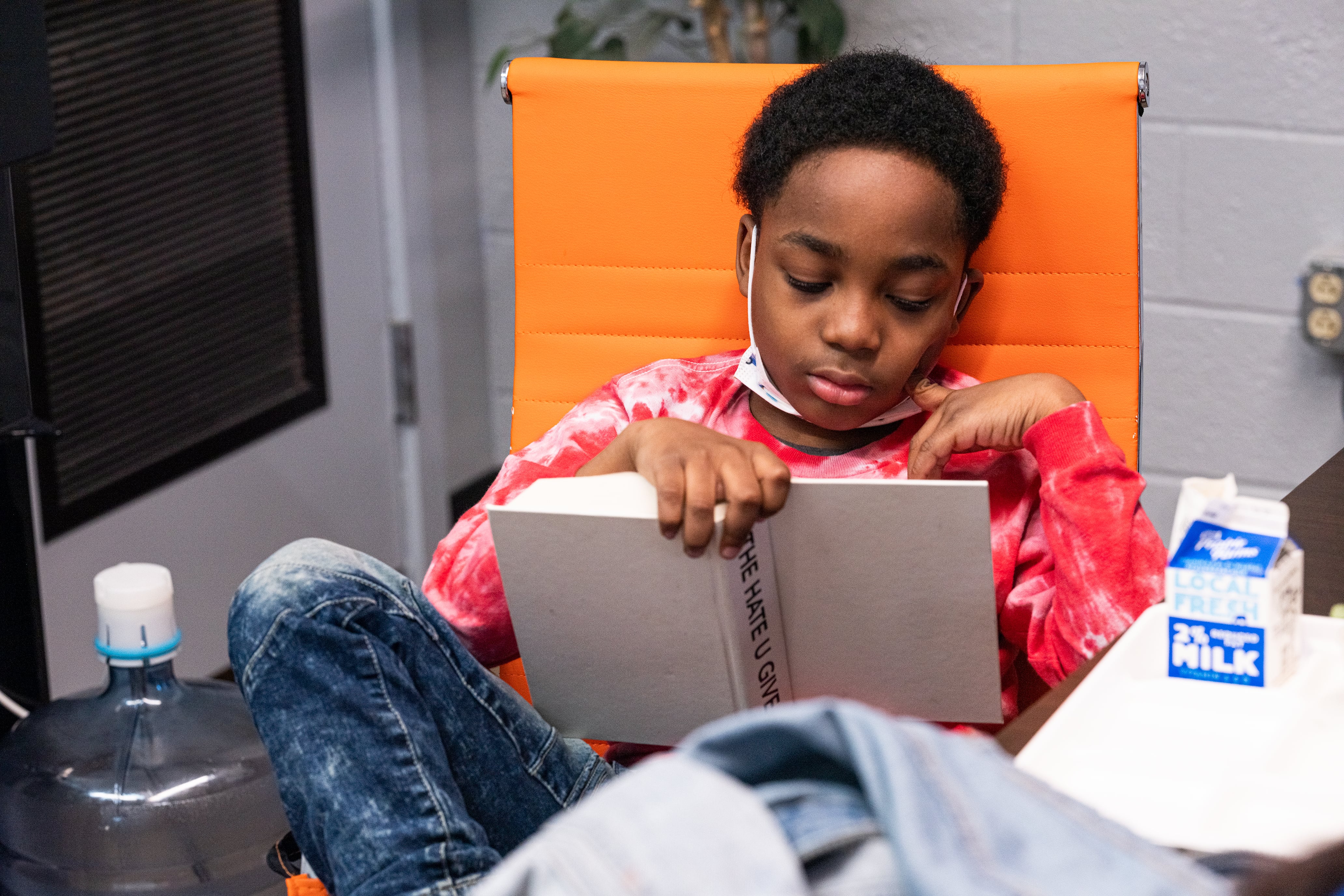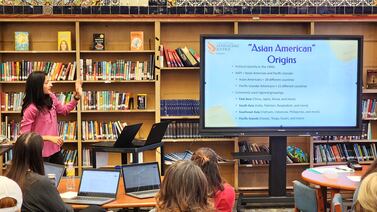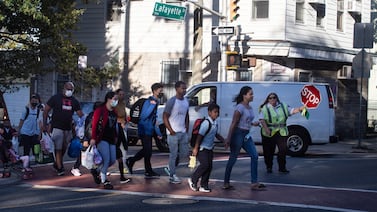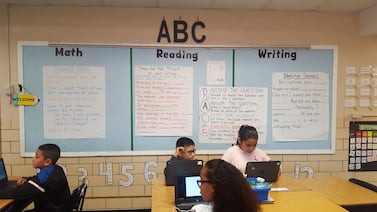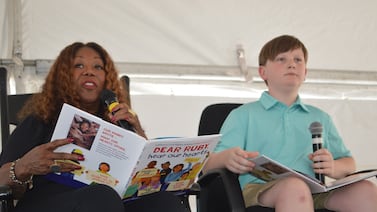Update, Aug. 15: Since this article published, the National Council on Teacher Quality revised Ball State University’s grade from an F to an A. Read more here.
Before Indiana students can learn how to read, their teachers have to learn how to teach reading.
But how that’s done may soon change at teacher preparation programs across the state, as Indiana joins a national push to adopt reading practices shown to improve literacy
By 2025, new teachers will be required to demonstrate their proficiency in the science of reading — a term for a wide body of research that emphasizes phonics, fluency, vocabulary, comprehension, and phonemic awareness in reading instruction. And programs risk losing their right to call themselves “accredited” if their curriculums aren’t based in reading science by 2024.
Helping Indiana colleges make that mandatory transition is a $25 million fund from the Lilly Endowment Inc. earmarked to help incorporate the science of reading into teacher preparation programs. Several programs said they’re already using planning grants from the endowment to make sure their courses adhere to the new standards.
Just how far they have to go is uncertain.
A new report from the National Council on Teacher Quality — known as NCTQ — found an uneven landscape of reading instruction at Indiana colleges.
Yet at least two of the eight teacher preparation programs at Indiana universities that received failing grades from NCTQ, Indiana University Bloomington and Ball State, dispute the group’s conclusion that they aren’t sufficiently preparing teachers to use the science of reading.
When did Indiana adopt the science of reading?
Though science of reading has become the norm at some schools, a statewide push began last August, with an $85 million donation from the Lilly Endowment to train more teachers and literacy coaches.
A law passed during the most recent legislative session also requires districts, teachers, and teacher prep programs to get on board with science of reading research.
All of these changes are meant to help more Indiana students learn to read: Only around one-third of Hoosier fourth graders were proficient in reading on the National Assessment of Educational Progress last year, a result that’s similar to the national average.
Karen Betz is the assistant professor of literacy at Marian University, which received top marks for its reading instruction program from the NCTQ this year after aligning its curriculum with the science of reading in 2017.
She said it’s long been clear to psychologists and neuroscientists that reading science helps more children learn to read. But some teacher preparation programs must still figure out how to translate that research into pedagogy.
Furthermore, some teachers have told her they’re familiar with the principles of reading science, but aren’t allowed by their school districts to implement such strategies in their classrooms.
“Institutions are holding onto theories of how kids learn to read instead of putting into practice how kids actually learn to read,” said Betz.
During the so-called “Reading Wars,” detractors cast the science of reading as boring and sterile compared to an emphasis on letting children choose and read books on their own, said Jeanette Mancilla-Martinez of Vanderbilt University, who’s conducting a review of the reading curriculum at Indiana University Bloomington’s teacher preparation program through a Lilly grant.
But learning to read is a cognitively demanding skill that requires explicit instruction, Mancilla-Martinez said, and some children need more support than others.
“The idea that you have books around the house, you don’t need these boring phonics skills, you’ll learn naturally — that may happen for a small percentage of children, but that’s not good enough,” Mancilla-Martinez said.
Do Indiana teachers learn the science of reading?
For its report released last week, NCTQ evaluated whether aspiring teachers learned the five principles championed by reading science, as well as whether the schools’ curriculum included outdated or disproven practices, like the three-cueing model.
Of the 18 programs evaluated in Indiana, just four earned an A or better, and eight earned an F. The report found at least five programs teach disproven practices, and only seven offered instruction on teaching reading to English language learners.
The results are “troubling,” said Justin Ohlemiller of advocacy Stand for Children Indiana, an education advocacy group, especially when combined with the state’s low national reading scores.
“If we’re going to address the literacy crisis in our state, it’s going to take a significant change in approach from those who are responsible for training our educators of the future,” Ohlemiller said in a statement.
On a positive note, 12 programs offered some instruction on teaching reading to struggling readers, like students who have dyslexia, according to the report.
Marian University’s Klipsch Educators College was the only program in Indiana — and one of just 48 in the country — to earn an A+ rating in the report.
Meanwhile, the teacher prep programs at Indiana University Bloomington and Ball State University — one of the largest teacher prep programs in the country — pushed back on their F grades in NCTQ’s report.
Representatives of Ball State’s Teachers College said the report relied on incomplete course materials obtained through public records requests, a complaint that echoes critiques of previous NCTQ reports. The council countered that it provided an opportunity for colleges to provide additional material in January.
“We have always included the components and prepared our candidates in what is now termed the science of reading,” said Jackie Sydnor, associate professor and assistant chair for Ball State’s Department of Elementary Education.
Sydnor pointed to other indicators of the quality of Ball State’s program, such as its accreditation from the Council for the Accreditation of Educator Preparation, as well as students’ higher-than-average pass rates on the state teaching exam.
Still, the college is using a $100,000 planning grant from the Lilly Endowment to conduct an analysis of its reading instruction programs, she said.
Indiana University Bloomington also received a $100,000 grant from Lilly to evaluate its existing programs for science of reading alignment, said Jeff Anderson, associate dean for undergraduate education. He said the school’s faculty believes they are teaching the science of reading, as evidenced by candidates’ performance on licensing exams.
“Our goal as a teacher prep program is to ensure our candidates graduate with the skill and expertise to be effective teachers,” Anderson said. “Clearly, the ability to learn to read is core to being successful in P-12.”
Under new state laws, the Indiana Department of Education is required to conduct a review of accredited teacher preparation programs beginning in 2024. Those who don’t have a curriculum based on the science of reading by then may be put on an improvement plan by the state, or face losing their accredited status.
How do teachers use the science of reading?
Even with a seal of approval from the NCTQ, Marian University’s Klipsch Educators College is looking to do more work with the science of reading. The college has received both a $75,000 planning grant and a $750,000 implementation grant from the Lilly Endowment to align their alternative teacher licensure and graduate programs to reading science.
The college intends to roll out Indiana’s first ever master’s program in reading science in May 2024.
Betz, the literacy professor, said a core part of the Klipsch program is the work that preservice teachers do in schools alongside their professors, who evaluate their lesson plans and step in to demonstrate effective teaching.
Higher education institutions have a responsibility to graduate teachers who are ready, rather than graduating those who will need to backtrack once they’re on the job, she said.
“That’s time lost,” Betz said.
In the same way that learning to read helps a child overcome future academic challenges, learning to teach reading effectively gives a new teacher the tools to shepherd students through their struggles, said Sally Busby, a clinical assistant professor at the University of Evansville’s School of Education. The school received an A rating from the NCTQ.
It’s using a $75,000 planning grant from the Lilly Endowment in part to create a council of literacy coaches from southern Indiana who can provide input on what’s needed in schools.
Of the competing approaches to reading instruction, Busby said teachers can find opportunities for students to enjoy books, while still devoting instructional time to decoding the language of the books they love.
“We were so desperate to make sure kids loved books, and thought the love of books would get them through the struggle of reading,” Busby said. “But you can’t enjoy reading until you can read.”
Correction: A previous version of this article incorrectly identified the organization providing grants for science of reading. It is the Lilly Endowment Inc.
Aleksandra Appleton covers Indiana education policy and writes about K-12 schools across the state. Contact her at aappleton@chalkbeat.org.


